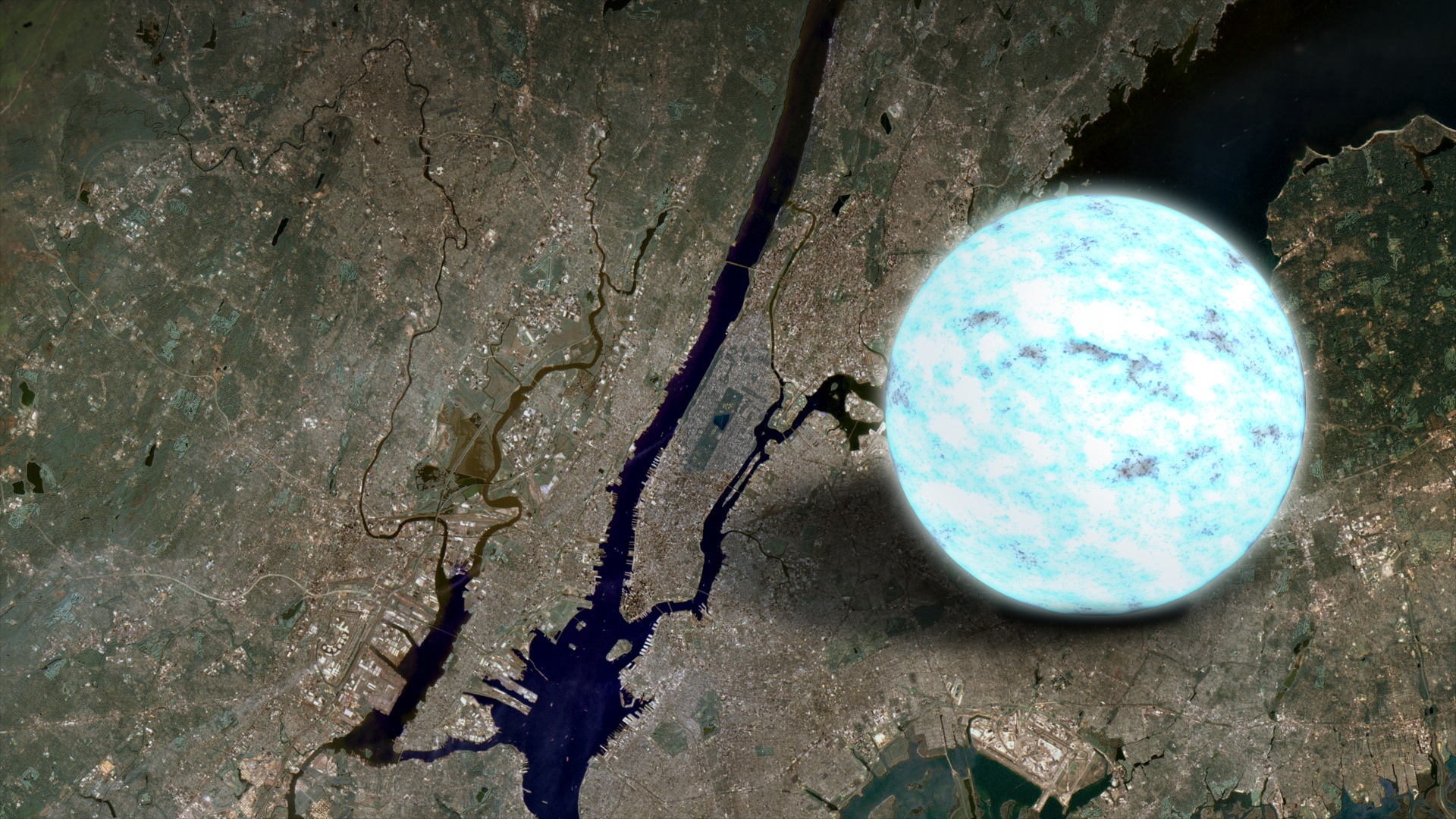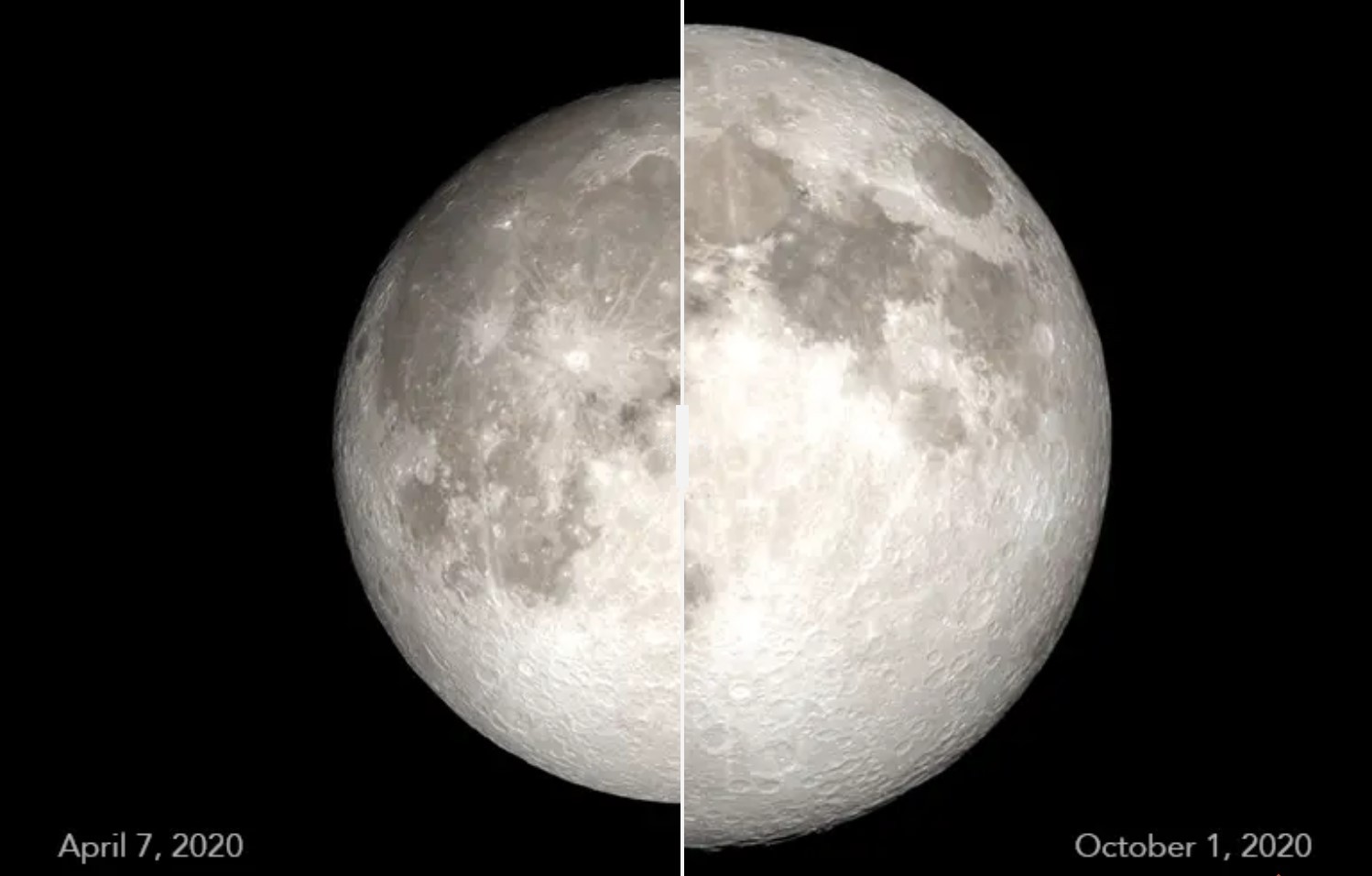Dark matter might live in a dense haze around stellar corpses
"If axion clouds, and thereby axions, are discovered, this would be a massive step toward solving the dark matter problem."

Scientists think it's possible that shrouds of hypothetical particles called "axions" could surround extreme, dead stars called "neutron stars." If true, this could bring us one step closer to solving the mystery of dark matter.
That's the conclusion reached by a team of researchers led by Dion Noordhuis of the University of Amsterdam, who previously investigated what would happen to particular dark matter candidates called "axions" that escape neutron stars. These incredibly lightweight particles, which are hypothetical because they have never actually been detected, are a good match for dark matter. That's because, if they exist, they would interact very weakly with "ordinary" matter and light. That's the aspect of dark matter that makes it effectively invisible.
Noordhuis and colleagues have now turned their attention to axions that would have been left behind after this daring escape, finding that these particles could congregate in dense clouds around neutron stars as a result of the dead stars' exotic properties.
"If axion clouds, and thereby axions, are discovered, this would be a massive step toward solving the dark matter problem," Noordhuis told Space.com. "The question is: Why are neutron stars the right celestial bodies to produce a cloud of axions?"
But how could the gathering of axion clouds happen, and why are neutron stars and not, say, black holes the ideal bodies to gather these axion clouds? It begins with the fact that dark matter, and thus axions, interact with gravity — and neutron stars are the "Goldilocks" of this situation, having just enough gravitational influence but not too much.
Seeing dark matter more clearly through axion clouds
To understand why dark matter is such a challenge for scientists, consider that all the matter wrapped up in everything we see around us — from stars, planets, and moons down to humans, coffee tables and even cats — accounts for no more than 15% of the matter in the universe. The other 85%, dark matter, is effectively invisible because it either doesn't interact with light (or, at least, does so incredibly weakly).
Axions are the current prime suspects for dark matter particles, and the team theorizes that a crafty technique could allow current telescopes to observe these shrouds of dark matter around what are known as neutron star "traps," or wells in the fabric of space and time that these stars create.

The team reasons that if axions have masses within a certain range that current theoretical models support, then neutron stars would be surrounded by clouds of these dark matter particles.
Get the Space.com Newsletter
Breaking space news, the latest updates on rocket launches, skywatching events and more!
According to the researchers, one surprising finding was that this cloud gathering would be "generic," meaning that it wouldn't only be restricted to neutron stars with certain qualities. That means axion clouds could gather around young neutron stars with a rapid rate of spin that blasts out the light from their poles, known as "pulsars," as well as older neutron stars that have slowed and thus don't act like spinning cosmic lighthouses. Additionally, the clouding action should occur for all types of axions.
Noordhuis and his colleagues found that axion clouds would be very dense, able to exceed local dark matter densities by more than 20 orders of magnitude over large periods of a neutron star's life. This density matters because, though axion interactions with light and matter would be weak and thus rare, a region where enough of these particles are clustered together could result in a "boosted signal" that is indeed detectable.
He added that there would be very small interaction strengths between the hypothesized axions and particles of light, or photons, which would be much weaker than we can probe with current telescope technology. However, when axions cluster in dense clouds around neutron stars built over the course of millions of years, that situation could change. Telescopes should be able to pick those clouds up.
"Once an axion cloud has built up sufficiently, there can be large amounts of axions converting into light particles, creating powerful observational signatures in the form of radio waves," Noordhuis said.
To discover why neutron stars are the ideal bodies to gather dense axion clouds, it is worth exploring where their extreme characteristics come from.
Why neutron stars?
Neutron stars are born when stars at least eight times more massive than the sun reach the end of the fuel supply they need for nuclear fusion at their cores. This also cuts off the outward energy or "radiation pressure" that supports the star through its life against the inward push of its own gravity.
This causes the complete gravitational collapse of the massive star's core. This stellar crumpling sends shockwaves rippling out to the star's upper layers, triggering a massive supernova explosion that blows away most of the star's mass.
The result is a body with between one and two times the mass of the sun crushed into a body with a width of around 12 miles (20 kilometers) that would fit within the borders of Manhattan. That's a neutron star.

Just because a neutron star would fit within the city limits of the average city here on Earth doesn't mean it would be a good idea to drag one home (if such a thing were even possible).
The gravitational collapse of a massive star's core creates a sea of matter rich in neutrons, particles usually found with protons in atomic nuclei. A property of quantum physics possessed by these neutral particles called "neutron degeneracy" prevents the neutron star from further collapse. This can be overcome if a stellar core has enough mass, and that leads to the complete gravitational collapse that creates a black hole.
The neutron-loaded matter that composes a neutron star is the densest known matter in the universe. It is so dense that if just a teaspoon of neutron star "stuff" was brought to Earth, it would weigh 10 million tons. That's equal to stacking 85,000 blue whales on a teaspoon.
With this comes an intensely strong gravitational field which makes these dead stars ideal axion traps.
"Neutron stars are the right celestial bodies to trap part of the produced axion population due to their massive gravitational fields," Noordhuis said. "Black holes would also be efficient trappers, but they would also more efficient absorbers of axions. Also, at the moment, it is not at all clear if axions would be produced in a similar manner around black holes."

The immense gravity around neutron stars isn't the only quality of these stellar remnants that may help them gather dense clouds of axions. When the stellar core that becomes a neutron star collapses, the magnetic field lines of that star are squashed together. The closer the magnetic field lines are together, the stronger the magnetic field.
As a result, neutron stars have the strongest magnetic fields in the known universe. This results in them being surrounded by trapped ionized gas made up of charged particles collectively called plasma.
"Neutron stars are surrounded by a plasma known as the magnetosphere, which allows for an oscillating electromagnetic field to exist above the neutron star poles capable of producing axions," Noordhuis explained. "Neutron stars harbor the strongest magnetic fields in the universe, strengthening the interaction between axions and photons."
"That means that not only can axions be produced around neutron stars, but massive amounts of these particles can be produced."
Axions may only weakly interact individually with photons, but when gathered in dense clouds collectively, this axion-light interaction could be traced.
Give me a sign
The team identified two signals that would indicate the presence of axion clouds. The first would be a continuous signal emitted during large parts of a neutron star’s lifetime. This signal would represent an extra component appearing on top of the intrinsic light emitted by a neutron star. The second is a transient signal emitted at the end of a neutron star’s life, the moment at which a neutron star stops producing twin beams of light that blast out from its poles as it spins, sweeping across the universe and creating the "lighthouse" effect of rapidly spinning neutron stars, or "pulsars."
"This transient signal is the result of drastic changes in the neutron star environment coincident with its 'death,'" Noordhuis continued. "Both of these signatures have the potential to probe the coupling between axions and photons beyond current limits, even using existing radio telescope infrastructure."

Of course, it is still very early days for this research, and even if axions are detected, they may not explain dark matter. Additionally, they might not be the only particles making up this mysterious form of matter that can currently only be inferred by its interaction with gravity.
"This is the first time this type of axion cloud has been discussed, so naturally, there is a lot more work to be done," Noordhuis said. "There is already a follow-up research focusing on how these bound axions can change the dynamics of neutron stars themselves. For example, more work in this direction concerning the non-trivial interplay between axions and the electrodynamics in these systems is sure to follow as well."
It is little surprise that for a theory that crosses scientific disciplines ranging from astrophysics to particle physics, a great deal of collaboration between fields will be needed to fully investigate the potential connection between dark matter, axions and neutron stars.
"A full understanding of axion clouds will require complementary efforts from multiple branches of physics, including particle astrophysics, plasma physics and observational radio astronomy," Noordhuis said. This work thereby opens up a new, cross-disciplinary field with lots of opportunities for future research."
The team's research was published on October 17 in the journal Physical Review X.
Join our Space Forums to keep talking space on the latest missions, night sky and more! And if you have a news tip, correction or comment, let us know at: community@space.com.

Robert Lea is a science journalist in the U.K. whose articles have been published in Physics World, New Scientist, Astronomy Magazine, All About Space, Newsweek and ZME Science. He also writes about science communication for Elsevier and the European Journal of Physics. Rob holds a bachelor of science degree in physics and astronomy from the U.K.’s Open University. Follow him on Twitter @sciencef1rst.
-
Torbjorn Larsson ReplyThe other is a burst of light at the end of the neutron star's lifespan, the point at which it stops emitting radiation. This process is projected to naturally take trillions of years; the Universe isn't old enough for it to have happened yet, so we're unlikely to observe any axion-bursts from dying neutron stars soon. That makes the continuous signal the best bet.
https://www.sciencealert.com/we-finally-know-where-to-look-for-the-universes-most-sought-after-particle









